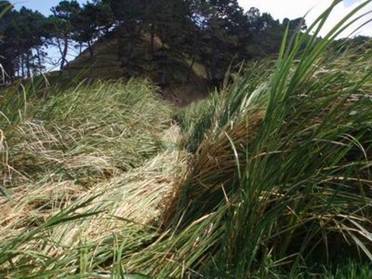Introduction
As the management authority for pest plants and animals, Northland Regional Council (NRC) is responsible under the Biosecurity Act 1993 for locating and controlling pest plants and animals in the region. Pests of particular concern in Northland are identified in the Northland Regional Pest Management Strategies. These are a collection of action plans that describe why and how plant and animal pests will be controlled.
During 2007-08, the Council Biosecurity team responded to 833 enquiries in relation to pest management. Biosecurity staff also carried out monitoring and/or control of:
- Terrestrial pest plants - including Nassella tussock, Spartina, Bathurst bur, Californian thistle, nodding thistle and Lantana;
- Invertebrate pests - including guava moth, tropical grass webworm, gum leaf skeletoniser and pest ants, such as Argentinean ants;
- Pest animals - including possums, mustelids, cats, rats and goats; and
- Maritime invaders – including sea squirt.
NRC's goal is to prevent potential pests from entering the region, in addition to managing existing targeted pest infestations to levels where they no longer pose a threat to natural ecosystems, primary production and animal and human health. In addition to managing and operating pest management strategies, it is the role of the Council to work in partnership with local communities to promote pest management and facilitate Community Pest Control Areas in the region.
NRC also participates in a collective with 12 other regional councils and DOC to develop and trial new biological control mechanisms for pest plants. Key personnel from the Biosecurity team are also involved in the Kauri Dieback Response Team, which has been established at a national level in order to assess the risk, and determine methods to prevent the spread of this new pathogenic organism.

Photo: The pest plant ‘Manchurian ricegrass'
